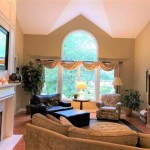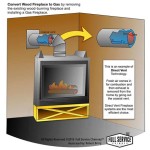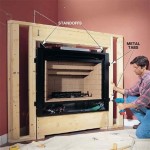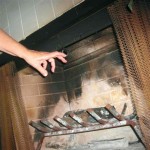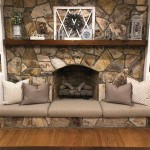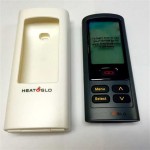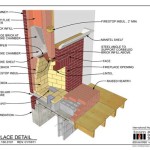```html
Electric Fireplace Problems: Troubleshooting and Solutions
Electric fireplaces offer a convenient and efficient alternative to traditional wood-burning fireplaces. They provide supplemental heat and aesthetic appeal without the mess, maintenance, and safety concerns associated with open flames. However, like any appliance, electric fireplaces can experience problems over time. Understanding common issues and their potential solutions can help homeowners maintain their fireplace and ensure its optimal performance.
Insufficient Heat Output
One of the most frequent complaints regarding electric fireplaces is inadequate heat output. A fireplace that isn't producing enough warmth can be frustrating, especially when it's intended to supplement the primary heating system during colder months. Several factors can contribute to this issue, and a systematic approach is necessary to diagnose the underlying cause.
Heater Element Malfunction: The heating element is the core component responsible for generating heat in an electric fireplace. Over time, these elements can degrade and lose their efficiency, resulting in reduced heat output. A visual inspection of the heating element may sometimes reveal signs of damage, such as cracks or burns. However, a multimeter can be used to test the element's continuity. If the element is faulty, replacement is generally the recommended solution. Consider consulting a qualified electrician to ensure safe and proper replacement.
Thermostat Issues: The thermostat regulates the temperature by controlling the operation of the heating element. A malfunctioning thermostat may not accurately sense the room temperature, leading to premature shut-off or insufficient heating. A faulty thermostat can also prevent the heating element from turning on at all. To test the thermostat, compare its setting with the actual room temperature using an independent thermometer. If there's a significant discrepancy, or if the thermostat fails to trigger the heating element, it may need to be replaced. Some electric fireplaces have digital thermostats that may require professional diagnosis if they malfunction.
Airflow Obstruction: Restricted airflow can significantly reduce the efficiency of the heating system. Dust, debris, or obstructions within the fireplace unit can impede the circulation of warm air. Regularly cleaning the fireplace, including the vents and heating element area, is essential for maintaining optimal airflow. Ensure that furniture or other objects are not blocking the air intake or exhaust vents of the fireplace.
Incorrect Size for the Room: Electric fireplaces are rated based on their heating capacity, typically measured in British Thermal Units (BTUs). If the fireplace is undersized for the room it's intended to heat, it will struggle to maintain a comfortable temperature. Consider the square footage of the room and consult the manufacturer's specifications to determine the appropriate BTU rating for your needs. An alternative is supplementing with a second heat source if replacing the fireplace is not an option.
Flickering Flames Problems
The visual appeal of an electric fireplace relies heavily on its flame effect. Issues with the flame display can detract from the overall ambiance and enjoyment of the appliance. These problems can range from inconsistent flickering to complete failure of the flame effect.
Motor or Reflector Problems: Many electric fireplaces use a motor-driven system with rotating reflectors or mirrors to create the illusion of flames. If the motor is failing, the flame effect may become erratic, slow, or completely stop. Similarly, damaged or misaligned reflectors can disrupt the light patterns and create an unnatural or distorted flame appearance. Inspect the motor for signs of wear or damage, and ensure that the reflectors are properly positioned and clean. Replacing the motor or adjusting the reflectors may resolve the issue.
LED Bulb Failure: Modern electric fireplaces often utilize LED bulbs to illuminate the flame effect. While LEDs are generally long-lasting, they can eventually fail. If the flame effect is dim, flickering, or entirely absent, check the LED bulbs. Replacing faulty bulbs with the correct type and wattage can restore the flame display. Note that some fireplaces have proprietary lighting systems requiring specific replacement parts from the manufacturer.
Control Board Issues: The control board manages the various functions of the electric fireplace, including the flame effect. A malfunctioning control board can lead to a variety of flame-related problems, such as erratic flickering, color distortion, or complete flame failure. Problems with the control board can be caused by power surges, component failure, or water damage. Diagnosing and repairing control board issues often requires specialized knowledge and equipment, so it's best to consult with a qualified technician.
Damaged Flame Effect Film or Screen: Some electric fireplaces project the flame effect onto a film or screen. If this film or screen is damaged (torn, scratched, or discolored), the flame effect will be distorted. Replacing the damaged film or screen is usually necessary to restore the visual appeal. The availability of replacement parts may vary depending on the manufacturer and model of the fireplace.
Unusual Noises
Electric fireplaces are designed to operate quietly. Unusual noises, such as grinding, clicking, or buzzing, can indicate underlying problems that require attention. Ignoring these noises can potentially lead to more serious damage or safety hazards.
Fan Motor Issues: Many electric fireplaces have a fan that circulates warm air. A failing fan motor can produce a variety of noises, including grinding, squealing, or rattling. These noises may be caused by worn bearings, obstructions in the fan blades, or a loose motor mounting. Inspect the fan motor for debris or damage, and lubricate the bearings if possible. If the noise persists, replacing the fan motor is generally the best solution.
Loose Components: Vibrations from the fan or other moving parts can cause screws, panels, or other components to loosen over time. Loose parts can rattle or vibrate against each other, creating unwanted noise. Carefully inspect the fireplace for loose screws, panels, or other components, and tighten them as needed. Use caution when tightening screws to avoid stripping the threads.
Transformer Hum: Some electric fireplaces use a transformer to convert the incoming voltage to the voltage required by the internal components. A noisy transformer can produce a humming or buzzing sound. Transformer hum can be caused by loose windings, vibration, or electrical interference. While some transformer hum is normal, excessive noise may indicate a potential problem. Consult with a qualified electrician if the transformer hum is excessively loud or accompanied by other electrical issues.
Expansion and Contraction: The materials used in the construction of electric fireplaces can expand and contract with temperature changes. This expansion and contraction can sometimes cause clicking or popping noises, particularly when the fireplace is first turned on or off. While these noises are generally harmless, they can be annoying. Ensuring that the fireplace is properly installed and that the surrounding surfaces are not restricting its movement can help minimize these noises.
Preventative maintenance, such as regular cleaning and inspection, can help to avoid many common electric fireplace problems. Homeowners should always consult the manufacturer's instructions before attempting any repairs or maintenance procedures. When in doubt, it's best to seek assistance from a qualified technician to ensure safe and effective troubleshooting.
```
Common Electric Fireplace Problems And How To Solve Them

Why Did My Electric Fireplace Stop Working Fireplaces Direct

5 Common Problems With Electric Fireplaces And How To Fix It Vevor Blog

How To Fix The 11 Most Common Electric Fireplace Problems

Electric Fireplaces Problems And Solutions Stapleton

5 Common Problems With Electric Fireplaces And How To Fix It Vevor Blog

Spotixpro Builder S Guide To Electric Fireplace Troubleshooting

Troubleshooting Your Electric Fireplace When Something Goes Wrong Appliances Connection

5 Common Problems With Electric Fireplaces And How To Fix It Vevor Blog

Electric Fireplace Common Problems And Their Solutions
Related Posts

